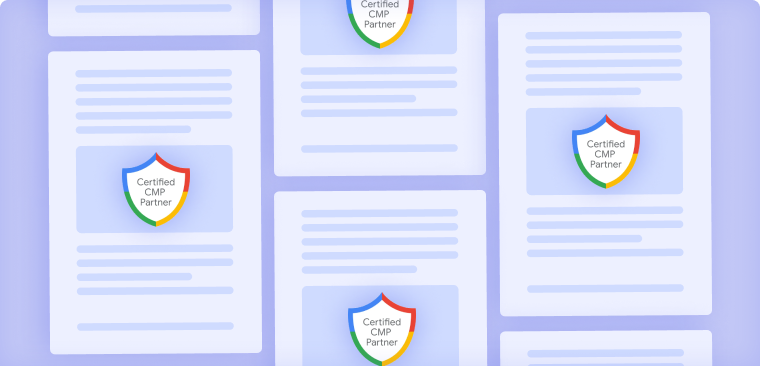Small Business Owner’s Guide to Crafting a Privacy Policy
July 28, 2025
•
4 min read
Table of contents
back
to the top
Small Business Owner's Guide to Crafting a Privacy Policy
If your small business collects any kind of personal data—email addresses, contact forms, or even analytics cookies—you’re legally required to have a privacy policy. It’s not just a best practice; it's a legal necessity under the General Data Protection Regulation (GDPR).
In this guide, we’ll break down how to write a privacy policy that meets GDPR compliance and builds user trust, step by step.

What Is a Privacy Policy and Why Does It Matter?
A privacy policy is a legal document that explains:
- What personal data you collect
- Why you collect it
- How you use, store, and protect it
- Whether you share it with third parties
- How users can access, modify, or delete their data
If your business serves EU-based users, GDPR requires that you provide this information clearly and transparently.
Step-by-Step: How to Write a Privacy Policy for Your Small Business
Step 1: List What Personal Data You Collect
Start by identifying all the personal data you collect directly or indirectly:
- Full name
- Email address
- Phone number
- IP address
- Browser or device information
- Location (if geotargeting)
- Payment information (if you sell products or services)
Step 2: Explain Why You Collect This Data
Tell users the purpose behind the data collection. Be clear and specific.
Common reasons include:
- To respond to inquiries
- To process orders or payments
- To send marketing communications (with consent)
- To analyze website traffic
- To comply with legal obligations
You must also define the legal basis for processing under GDPR, such as consent, contractual necessity, or legitimate interest.
Step 3: Disclose Any Third-Party Data Sharing
Do you use tools like:
- Google Analytics?
- Facebook Pixel?
- Mailchimp or Klaviyo?
- Stripe or PayPal?
If yes, you must name these third parties and explain what data is shared and why. Also, disclose if data is transferred outside the EU and what safeguards you have in place (such as standard contractual clauses).
Step 4: Inform Users of Their Rights
Under GDPR, individuals have the right to:
- Access their personal data
- Correct inaccuracies
- Request deletion of their data
- Restrict or object to data processing
- Receive a copy of their data (data portability)
Include a clear contact method (usually an email or contact form) that users can use to exercise their rights.
Step 5: Include a Cookie Policy (or Section)
Cookies often collect personal data and must be addressed under GDPR. Your privacy policy should:
- Explain what types of cookies you use
- State their purpose (e.g., functional, analytics, marketing)
- Clarify whether cookies are placed before or after user consent
- Link to a detailed cookie policy or preferences center
Consent Management Platforms like CookiePal help automate consent collection and store user preferences for GDPR compliance.
Step 6: Provide Details on How You Store and Protect Data
Mention:
- Where data is stored (servers, cloud, EU or outside)
- How it’s secured (encryption, limited access)
- How long you retain data (with justification)
Transparency builds trust and supports accountability under GDPR.
Step 7: Make Your Privacy Policy Easy to Find
Ensure your policy is:
- Linked in the website footer
- Accessible on all pages, including during sign-ups
- Written in simple, clear language
- Marked with the latest update date
Sample Privacy Policy Structure
Here’s a simplified outline to follow:
- Introduction
- What personal data we collect
- Why we collect your data (purposes + legal basis)
- Who we share your data with
- Cookies and tracking
- Your rights under GDPR
- How to contact us
- Updates to this policy
Final Takeaway
Privacy policies aren’t just for large enterprises—they’re essential for every small business that collects personal data. With GDPR enforcement continuing across the EU, having a transparent, well-written privacy policy is critical for legal compliance and user trust.
By clearly explaining what data you collect, why, and how it’s handled, you demonstrate accountability and respect for your users’ privacy.
Sources
Official GDPR Text (Articles 12–22)
https://eur-lex.europa.eu/eli/reg/2016/679/oj
European Commission – Data Protection Rules
https://commission.europa.eu/law/law-topic/data-protection_en
ICO (UK GDPR) – Your Right of Access
https://ico.org.uk/your-data-matters/your-right-of-access/
CNIL (France DPA) – Cookies and Other Trackers
https://www.cnil.fr/en/cookies-and-other-tracking-devices
Explore further

Comprehensive Guide to Managing Cookies in Wordpress
A complete guide to managing cookies in WordPress, including compliance, consent prompts, monetization, and tracking with tools like Facebook Pixel.
March 10, 2025
4 min

Privacy Meets Progress: How CookiePal Powers Suited Tutor’s Global Growth
CookiePal empowers Suited Tutor’s award-nominated, global edtech with GDPR & Google Consent Mode compliance, real-time cookie transparency & 20+ language consent.
July 10, 2025
3 min

Data Minimization in Practice: What CMPs Can (and Can’t) Collect
Your Consent Management Platform (CMP) is meant to help you stay GDPR compliant — but if it’s collecting more data than it needs, it might be doing the opposite.
May 01, 2025
4 min



